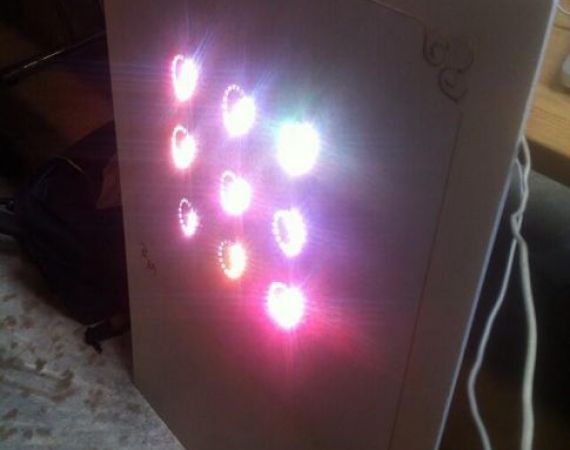Posted on Fri 20 Jun 2014
Lights, Cameras, Jellyfish
The Studio is in making mode, as we welcome this year’s Playable City Award winners Jonathan and Matthew into the Studio for the first time, we hear tales of late night hacking after David and Arthur’s excursion to Tate modern, where they made colourstories with light out of Tate data, and Laura…

Arthur and David's 'Light History' project for Hack the Space Image @david_haylock
The Studio is in making mode, as we welcome this year’s Playable City Award winners Jonathan and Matthew into the Studio for the first time, we hear tales of late night hacking after David and Arthur’s excursion to Tate modern, where they made colourstories with light out of Tate data, and Laura Kreifman creates a sprawling network of neopixels, designed to light up both jellyfish and a reactive dress.
Jonathan Chomko and Matthew Rosier joined us in the Studio on Wednesday to kick off their Playable City Award winning project, Shadowing, where they will be adapting streetlamps to make them record and play back the shadows of people walking beneath them. Verity and Jess have been taking them on adventures around the City, where they have been scouting out locations for the Shadowing lamps. Today, they visited a builders yard of decommissioned streetlamp parts, and hauled a few massive lamp heads back to the Studio to tinker with. We’ll keep you updated as the project progresses.
Last weekend, David and Arthur headed to the Tate Modern for a 24-hour hackathon, taking place in the Turbine hall. Participants in the hack used Tate data to create digital artworks. David and Arthur embedded 16 RGB LEDs in a canvas, and looked through the entire Tate catalogue, using colour to represent different works of art. Arthur described the project as an extension of colourstory in light. The pair made it into the shortlist for best project, and they definitely deserved it, given the amazing work and the 3 hours sleep they had had! They will be writing a blog about the project on the Studio website soon.
Thursday was the launch of the Colourstory kickstarter. We joined the Colourstory team, Arthur, Seth, and Charlotte for pizza and had a look at some of Arthurs brilliant world cup Colourstories, chronicling each match in colour. The project was tweeted by Kickstarter Staff Picks last night.
On Tuesday, the DCRC hosted the launch of the UK Chapter of DIGRA (Digital Games Research Association at the Studio. The event was attended by a mix of academics, industry and indie games practitioners with a set of lively pop-up presentations from Greg Foster (The Larks), Steve Martin (Bristol Games Hub) and Mitu Khandaker-Kokoris (Tiniest Shark) peppering the afternoons proceedings. A full report and details of how to get involved in future DiGRA UK activities will be posted the DCRC website next week.
Laura and David have been building the LED matrix and animation system for Laura’s fully reactive, LED dress, which she’ll wear for her upcoming performance, Kicking the Mic. She has been soldering a huge network of neopixels together, which will be tested as part of an installation at the Green Peace field at Glastonbury, involving 140 undulating bioluminescent jellyfish.
Sustrans, the UK’s leading sustainable transport charity visited the Studio on Thursday afternoon, to have a discussion with Studio residents about possible ways in which they can engage with technology and games to encourage more people to walk and cycle. They had some interesting chats with residents Tom, Ben, Tarim, Tine, Rosie and our Creative Technologist David, and we’ll keep you posted on any collaborations that might follow.
The first danceroom Spectroscopy open access scientific research paper has been published as part of the Faraday Discussion Volume 169, which took place in Nottingham, UK in early May. Residents David Glowacki, Phill Tew and Tom Mitchell are among the authors of the paper, which is titled “A GPU-accelerated immersive audio-visual framework for interaction with molecular dynamics using consumer depth sensors”.